
threatened
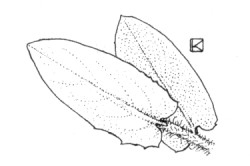
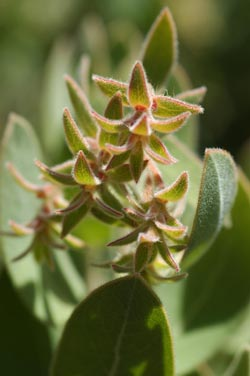
Photo taken at the “Chalks” © 2006 by Dylan Neubauer
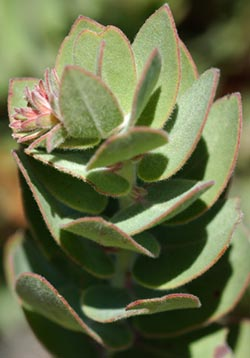
Photo taken at the “Chalks” © 2006 by Dylan Neubauer
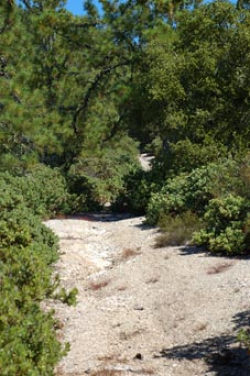
Photo taken at the “Chalks” © 2006 by Dylan Neubauer
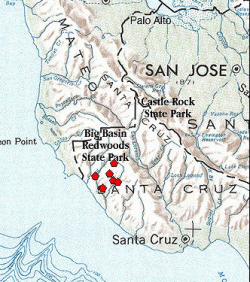
A red polygon indicates an extant occurrence



This fact sheet was prepared by Dylan M. Neubauer under award NA04N0S4200074 from the National Oceanic and Atmospheric Administration (NOAA), U.S. Department of Commerce (DOC). The statements, findings, conclusions, and recommendations are those of the authors and do not necessarily reflect the views of the NOAA or the DOC.
© Copyright 2006, Elkhorn Slough Coastal Training Program
Last updated: Sep 23, 2024 09:40
Common Names - Schreiber's Manzanita
Family - Ericaceae (Heath Family)
State Status - none
Federal Status - none
Habitat
Siliceous shale outcrops, martime chaparral, knobcone-pine woodland along the immediate coast, 180–650 m.
Key Characteristics
Erect shrub to 2 m tall; basal burl absent; twigs sparsely to densely soft-nonglandular-hairy, occasionally long-glandular-hairy; leaves grayish, base lobed and clasping, strongly imbricate, isofacial, canescent, and glaucous; lower inflorescence bracts foliaceous, gray-canescent; inflorescence paniculate, 2–4 branched; pedicels finely glandular-bristly; berries glandular- and nonglandular-hairy, sticky (Parker et al. 2013).
Flowering Period
January to March (can be identified year-round).
Reference Population
The “Chalks” (Lockheed) (Santa Cruz County).
Global Distribution
Endemic to the coastal side of northern Ben Lomond Mountain in the “Chalks” (Lockheed) (Santa Cruz County).
Conservation
Could been confused with A. regisimontana, A. pallida, and A. pajaroensis, which are similar in general aspect but geographically separated (reports from Monterey, Santa Clara, and San Mateo counties are one of these species misapplied), or A. andersonii, which occurs within its range and intergrades with it. Reports from Eagle Rock are likely misidentified.
A green-leaved, glabrous form occurs infrequently throughout populations of A. glutinosa, which botanist James A. West believes is a recessive byproduct of A. glutinosa’s hybrid ancestry (A. canescens x A. andersonii). Reproduces only from seed (does not stump-sprout) and requires mineral soil for germination.
After the 2009 Lockheed Fire the isolated population on the Last Chance Ridge side of Scott Creek was spared and contained approximately 250 adult plants (many of them quite old). The extensive population on the upper Schoolhouse Ridge, which encompasses a large, topographically complex area may have contained up to 700 scattered individuals (some diseased, some intact) and numerous seedlings recruited since the fire, despite the dessicating, low-nutrient environment (West 2015).
The 2020 CZU Lightning Complex Fire burned the entire area that supports this species. As of 2021, the current status is unknown. Surveys are required to determine whether plants are reseeding and how many will survive the drought conditions in 2021.
Reference
CNPS, Rare Plant Program. 2015. Arctostaphylos glutinosa, in Inventory of Rare and Endangered Plants (online edition, v8-02). California Native Plant Society, Sacramento, CA. http://www.rareplants.cnps.org/detail/26.html [accessed 1 February 2015].
Parker, V. T., M. C. Vasey, and J. E. Keeley. 2013. Arctostaphylos, in Jepson Flora Project (eds.). Jepson eFlora, http://ucjeps.berkeley.edu/cgi-bin/get_IJM.pl?tid=13927 [accessed 1 February 2015].
West, J. A. 2015. Traversing Swanton Road. http://arboretum.ucsc.edu/pdfs/traversing-swanton.pdf [accessed 21 January 2015].
